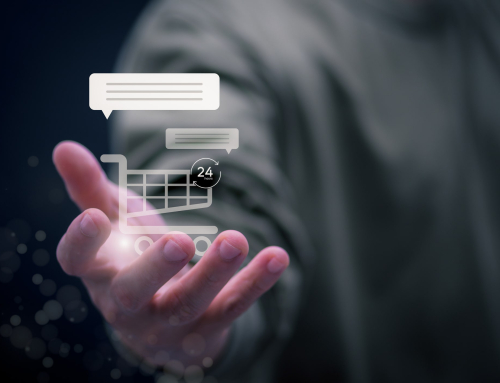Clienteling: Building a Successful Strategy
It’s 2023, and clienteling has gotten an upgrade.
Gone are the days where clienteling simply meant knowing your customer’s names (*FIRST_NAME* isn’t enough anymore) or interacting with them one-on-one in a physical shop. Shopping habits have changed, and with it, the process of creating a successful clienteling strategy has too.
Clienteling is no longer just about in-person, 1-on-1 relationships. Instead, it now covers both directed and self-directed clienteling, in-store clienteling, virtual clienteling and more.
That’s not to say that clienteling relationships are less important than they once were—if anything, they’re actually more important. As customers increasingly expect personalization—and reward companies who offer it—clienteling is an essential strategy to offer relational, personalized experiences to customers at scale.
So how do you create a clienteling strategy that is successful in 2023 and beyond? It comes down to four key elements:
- understanding your customer
- building relationships
- personalizing their experiences
- collaborating to maintain engagement
In this article, we’ll discuss the best practices for each of these, as well as some practical tips you can implement now to improve your clienteling strategy.
Clienteling Basics: Understanding Your Customer
First things first: before you can build a successful clienteling strategy that strengthens customer relationships through personalization and connection, you have to know and understand your customers—both generally and individually.
40 years ago—and for many small businesses today—this happened on an individual level, between store clerks and individual patrons. However, today, many companies have thousands—or hundreds of thousands—of customers who may primarily shop online, at store locations around the globe, or a combination of both.
How can businesses expect to understand their customers on such a large scale?
The answer lies in customer data.
To approach clienteling effectively in the digital age, you need to be collecting and analyzing customer data. Unless you’re a small, local business, operating on a first-name basis with all of your customers simply isn’t possible.
Instead, identify your target audience and their needs, whether from the data itself or from business insights and market research. Then, create customer personas to guide your strategy.
Customer personas create “buckets” that your customers fall into based on their data points. This allows you to effectively segment customers, understanding what customers who fit into a particular segment will want, need and do. It also guides your customization, allowing you to effectively personalize customer experiences based on the segments a particular customer falls into.
An example:
Say you’re a fashion e-Commerce business, and have customer segments related to both interest (i.e. shoes, purses, suits, etc.) and customer value (i.e. new customers, infrequent shoppers, VIP shoppers, etc.). Organizing existing customers into these segments based on their data also provides insight into how lookalike customers will behave.
If your infrequent shoppers who are interested in accessories are very sale-driven, you can plan a sale around items this segment is most likely to buy, and focus on marketing it directly to that segment. When new customers enter that segment, you have insight into their wants, needs, behaviors and more that can all be used to personalize and enhance their experience.
Building Relationships With Your Customers
The more you understand your customer—through customer data, segmentation and the like—the more you can build empathetic relationships with customers that offer an understanding of their situation and personalized recommendations. These types of relationships empower you to create loyal customers that feel connected to your brand.
Of course, this also relies on customer data. In order to personalize at scale, you have to have data to understand what this customer wants.
And in today’s world, personalization is more important than ever when it comes to customer satisfaction, loyalty, lifetime value, likelihood of purchasing and more. Consider just a sampling of the recent data on personalization:
- 86% of consumers will spend more with companies who personalize their experiences
- 54% of consumers—more than half—expect all of their experiences with a brand to be personalized, with 76% expecting some level of personalization throughout their buying journey
- 59% of consumers prefer personalization even more than speed when it comes to customer service
So how can companies build personalized relationships with customers?
Ready to take your business to the next level? Let our call center experts show you how we've helped organizations just like yours seamlessly scale while lowering costs and increasing efficiencies.
You won't regret it.
For starters, integrate personalization throughout the customer journey, whether the personalization is big or small. As the data shows, the majority of customers expect some level of personalization throughout the buying journey, so personalization plays a big role in clienteling relationships.
Additionally, leveraging modern technology can help support clienteling strategy and client relationships as well. Today’s technology can curate data that helps customer service agents, in-store representatives or even your website cater to individual customers, creating enhanced customer experiences and deepening relationships.
Clienteling Best Practices
When it comes down to it, clienteling is all about knowing your customers and then building relationships that keep customers coming back again and again. But there’s lots of tactics available to implement such a strategy—here are five go-to tactics from our team that you can start implementing right away.
Encourage team collaboration
More than 70% of today’s customers expect teams to collaborate behind-the-scenes with each other on their behalf, and 54% say they expect a company to share information internally so “they don’t have to repeat themselves.”
Implementing an effective and modern CRM system—and integrating it with your other tech—will allow your entire team to stay on the same page about customer preferences, requests and communications. Not only does it streamline the experience for your customer, but it also makes customer outreach and support more effective and efficient for your team.
Prioritize outreach
Speaking of outreach, a good clienteling strategy involves lots of it. Don’t wait for clients to need help and reach out to you first!
After all, the goal of clienteling is to deepen long-term relationships. In a noisy marketplace with thousands of companies competing for customer attention, you’ll need to initiate if you want to stand out and build relationships that last.
Proactive outreach can look like:
- sending out a customer coupon or thank-you gift (either virtually or physically)
- making a recommendation for a select group of customers
- introducing loyal customers to a new feature you implemented and demonstrating how to use it
- giving out referral codes or bonuses
- sending out customer feedback surveys
- asking for feedback from loyal customers on upcoming product designs
- providing a gentle reminder to customers who may need to reorder a product, schedule an appointment, or so on
The key is to strengthen the relationship through relevant communication that continually adds value and reassures the customer that you are there for them.
Personalize, personalize, personalize
Of course, the more personalized your outreach and communications can be, the better. As discussed, clienteling can’t survive without some layer of personalization, and today’s customers expect personalization at every turn.
Personalization doesn’t have to be a massive initiative either—it can be small things, such as:
- addressing communications directly to the recipient
- customizing app experiences based on individual customer preferences
- providing personalized recommendations based on purchase or search history
- offering unique coupons based on previous purchases or segmentation data
- sending birthday coupons or rewards
- using proximity messaging and marketing
Remember: the more you know about your customers, the more you can personalize. And the more personalized their offers and communications, the more likely they are to purchase, stay loyal to your brand, and refer other customers.
Keep the relationship going
Like any relationship, client relationships can atrophy over time if not attended to. Where many companies fail at clienteling is dropping the relationship once a sale has been made.
Don’t stop at the sale! Stay top of mind post-purchase with relevant and personalized outreach, offers and communication.
For example, you might:
- reach out to customers for feedback or reviews
- send communications around getting the most value out of their product
- send reminders for post-service follow-ups or future appointments, as needed
- offer promotions for new products related to the one they purchased
Clienteling doesn’t have an end date. Ideally, of course, the customer will make a sale—but the sale is just one step on a successful clienteling journey, and developing ongoing relationships will make future sales more likely—and more efficient for your company.
Focus on the relationship, not on the sale
With that in mind, our final tip is to use clienteling as a way to focus on the relationship, and not just the sale.
The goal of clienteling is to develop successful, long-term relationships that ultimately lead to more sales over a longer period of time. In short, it’s a long game—and focusing on the long-term relationship over quick wins will do more for your clienteling strategy than simply focusing on selling will.
Measuring The Success of Your Clienteling Strategy
Once you have your strategy in place, how do you know if it’s working?
Measuring and tracking KPIs related to customer experience and clienteling is one the most effective ways to ensure your strategy is working. For example, consider measuring metrics like:
- Customer Satisfaction (CSAT), which measures post-interaction satisfaction.
- Net Promoter Score (NPS), which measures how likely customers are to promote your brand.
- Customer Lifetime Value (CLV, or LTV), which measures the average value of a customer over their entire “lifetime” with your brand.
- Average Purchases per Customer, which indicates how many times customers tend to purchase again, or the percentage of customers that make repeat purchases.
If your clienteling strategy is successful, each of these metrics should be improving—customer satisfaction should go up, NPS and CLV should increase, and the average number of purchases per customer should grow as customers become more loyal to your brand.
However, if your internal team doesn’t have time to execute a clienteling strategy—or measure and analyze the associated data and results—it may be time to outsource your clienteling to a customer experience expert. At ROI CX Solutions, we have decades of experience with customer service and clienteling that can help your team offer exceptional support that drives loyalty and results.
Ready to ramp up the success of your clienteling strategy? Connect with an expert from ROI CX Solutions today.






